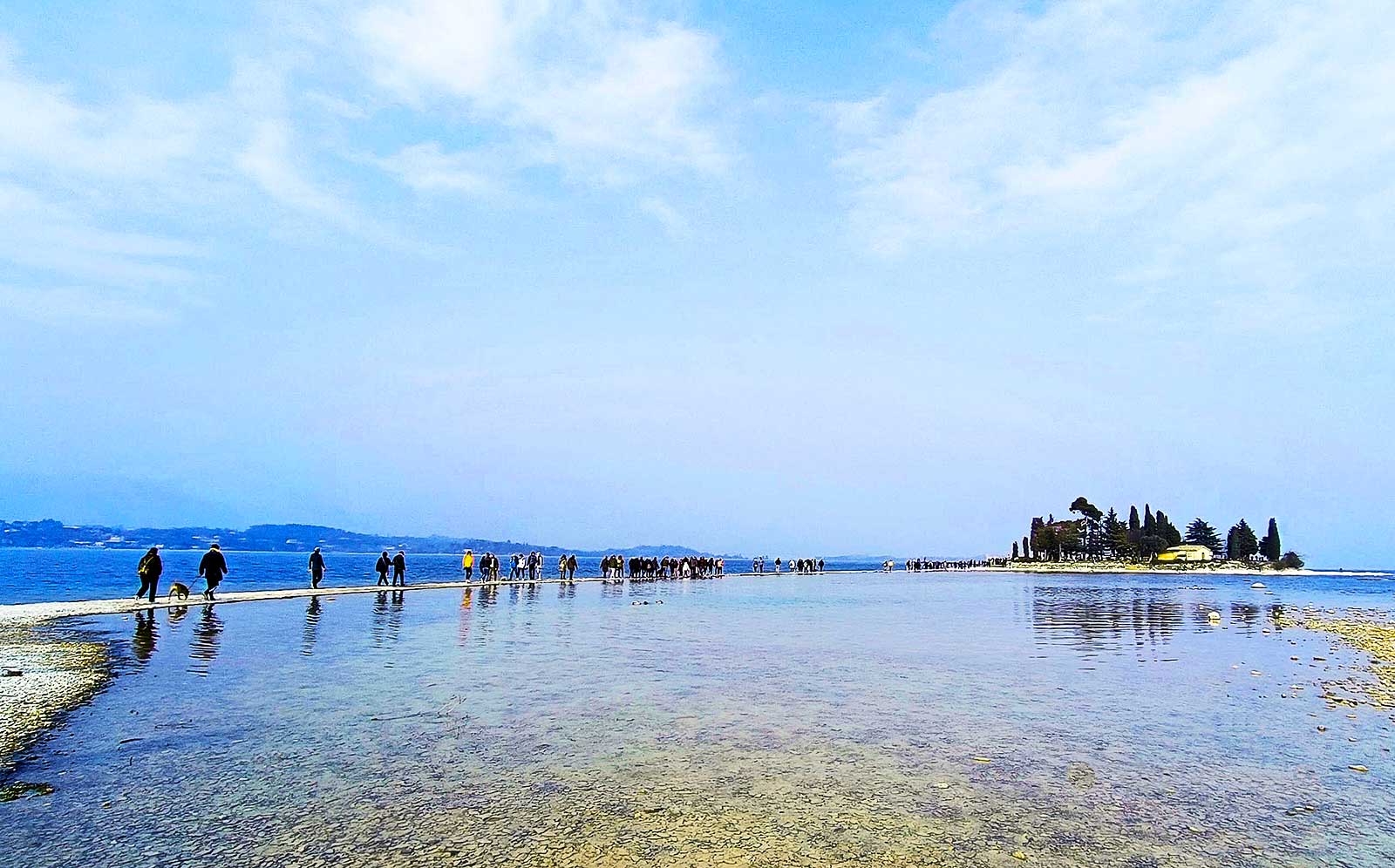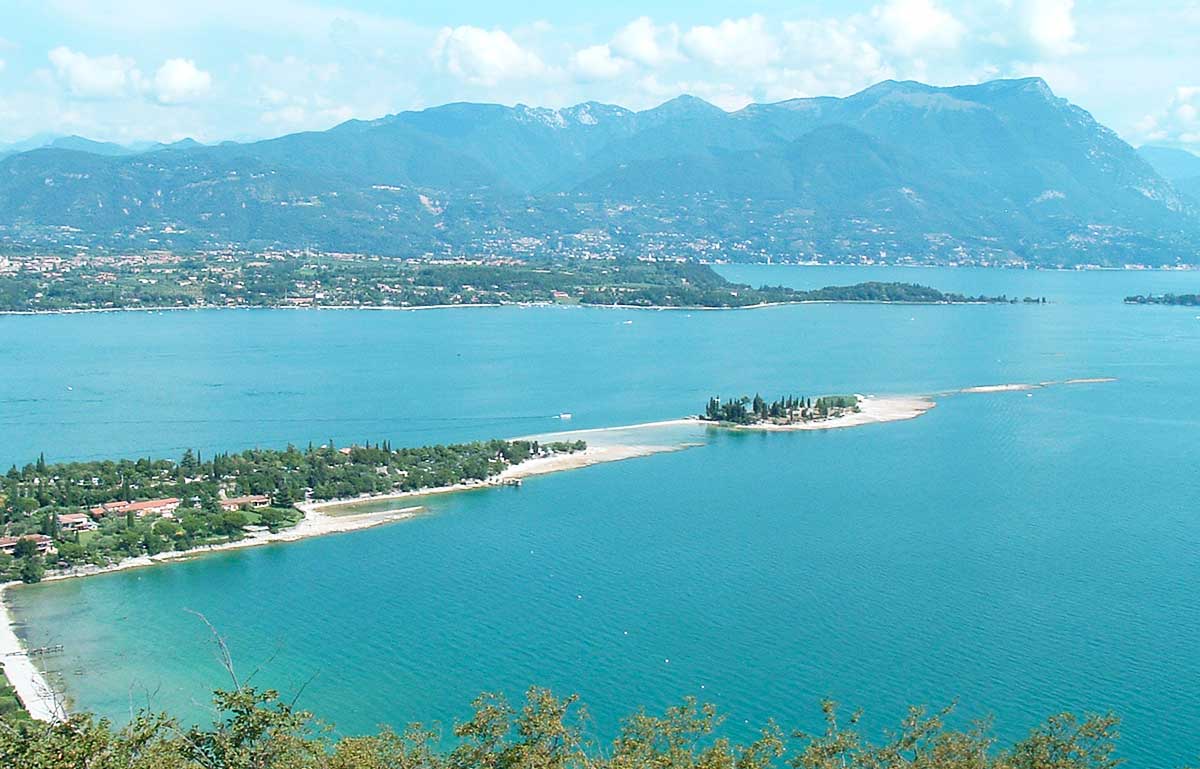


In Manerba on Lake Garda, the small Isola dei Conigli is no longer an island! Today, in fact, it can also be reached on foot.
The very low water level of Lake Garda has caused the isthmus that connects the mainland to the islet of San Biagio to re-emerge, also known as Isola dei Conigli, in Manerba sul Garda, in the province of Brescia.
The show is very suggestive and gives many tourists the experience of walking in the middle of the lake on a natural walkway to reach the small and precious island with a nice walk of a few hundred metres.
Although the island is very small, it is a pearl of rare beauty, often unknown to the many tourists who flock to the shores of Lake Garda, and in spring it is covered with meadows, flowers and lush Mediterranean scrub.
The "local" name of the island of Sal Biagio derives from a curious peculiarity: the presence of numerous rabbits, which once could move freely even in the presence of man.
During the spring season it is pleasant and relaxing to sunbathe on the flowering meadows or, for the warmer ones, dive into the crystalline and particularly clear waters of this area of the lake, where the panorama is wonderful, with a view of the Rocca di Manerba a few hundred meters.
Being able to walk to the Isola dei Conigli is an event that occurs very rarely and exclusively in the summer season.
Normally when the water is very shallow the level is about knee height,
Being able to "walk" on the waters of the lake in the middle of winter is certainly a fascinating experience, even if one hopes that the drought won't last much longer.
For those who want to explore the depths of this part of Lake Garda, summer is the most suitable season: divers and diving enthusiasts come from all over Europe, attracted by the Scoglio dell'Altare, one of the most famous diving spots on Lake Garda. Garda.
Located a few hundred meters from the Isola dei Conigli, the Scoglio dell'Altare, immersed in its crystal clear waters, you can admire jagged caves and a sheer wall that descends up to 100 meters, with unique flora and fauna: sponges, amberjacks , perch, pike, tench, eel and many other marine species.
